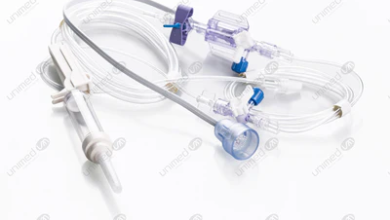Preventing Scratches and Damage on Warehouse Floors

Warehouse floors are a crucial part of any industrial facility. They support heavy equipment, foot traffic, and large inventories daily. If these floors get scratched or damaged, it can lead to safety hazards, costly repairs, and inefficiencies. Preventing such issues not only extends the life of the flooring but also keeps the warehouse operating smoothly. Here are some practical tips for cleaning warehouse floors:
1. Use Floor Protection Mats
Installing floor protection mats in high-traffic areas is an effective way to minimize wear and tear. These mats can absorb the impact of heavy loads, prevent scratches from equipment, and reduce dirt and debris buildup. Place them near loading docks, entrances, and areas where forklifts or other machinery are frequently used.
2. Maintain Equipment Regularly
Damaged or poorly maintained equipment, such as forklifts or pallet jacks, can scratch or damage warehouse floors. Regularly inspect and maintain machinery to ensure smooth operation. For example, check the wheels on forklifts and replace them if they’re worn or have sharp edges. This simple step can significantly reduce the risk of floor damage.
3. Implement Proper Cleaning Practices
Regular cleaning helps keep the floor free from debris that can cause scratches. Use appropriate cleaning equipment and non-abrasive cleaning agents to avoid further damage. For example, avoid using harsh chemicals or rough scrubbers that can harm the floor’s surface. A clean floor is less likely to suffer from damage over time.
4. Apply Protective Coatings
Applying a protective coating or sealant to your warehouse floor can act as a barrier against scratches and stains. Epoxy coatings, for instance, are durable and provide a smooth surface that resists damage from heavy loads and machinery. Protective coatings also make the floors easier to clean and maintain.
5. Train Staff on Best Practices
Employee actions can impact the condition of warehouse floors. Training staff to handle equipment carefully and follow designated pathways can reduce unnecessary wear and tear. Encourage employees to avoid dragging heavy items across the floor and use proper lifting or moving tools instead.
6. Use Protective Covers for Heavy Items
When storing or moving heavy equipment or materials, use protective covers, pads, or skids. These accessories can help distribute weight evenly and prevent scratches or dents caused by sharp edges or heavy impacts.
7. Monitor and Repair Early Signs of Damage
Inspect your warehouse floor regularly for early signs of damage, such as cracks, scratches, or uneven surfaces. Addressing these issues promptly can prevent them from worsening and becoming more costly to repair. A quick patch-up today can save you from major expenses tomorrow.
Conclusion
Preventing scratches and damage on warehouse floors requires a combination of proactive measures, regular maintenance, and staff awareness. By using floor protection mats, maintaining equipment, cleaning properly, applying protective coatings, and training employees, you can keep your warehouse floors in excellent condition. Investing in prevention not only saves money on repairs but also ensures a safer and more efficient workspace.




